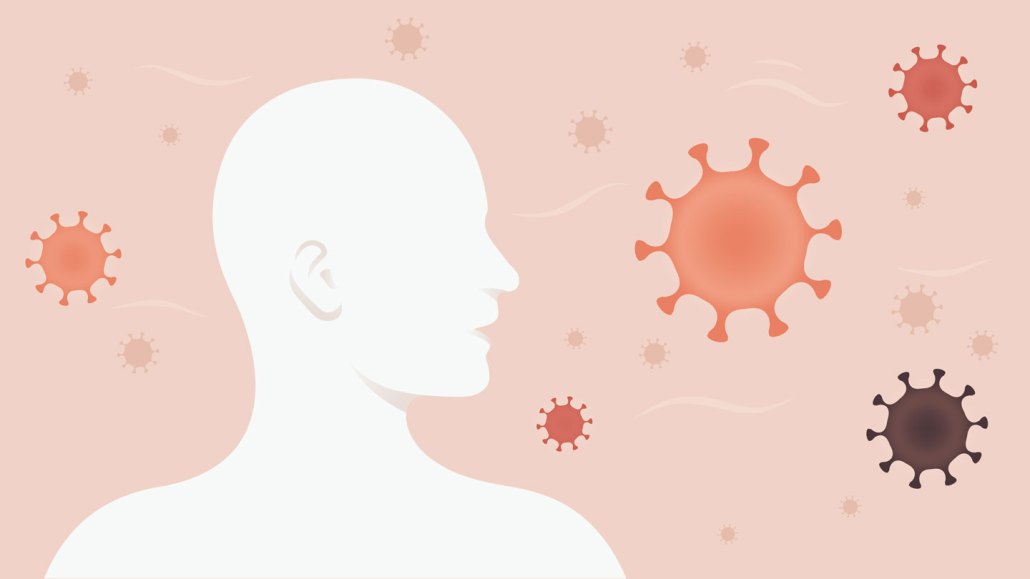Here’s how much coronavirus people infected with COVID-19 may exhale
Just breathing naturally, people can emit dozens of copies of viral RNA every minute

A new study measures exactly how much coronavirus infected people emit over time just by breathing.
filo/DigitalVision Vectors/Getty Images Plus
- More than 2 years ago
The virus that causes COVID-19 spreads through the air. But just how much virus people breathe out over the course of infection isn’t well-defined.
To pin the numbers down, olfactory researcher Gregory Lane and colleagues analyzed over 300 breath samples from 43 people with COVID-19, following them for nearly three weeks. Levels varied between and within individuals, but some people shed a lot, releasing over 800 copies of viral RNA per minute at times.
On average, participants breathed out 80 copies per minute for a full eight days after symptoms began, the team reports September 8 in a preprint posted at medRxiv.org. Only after that point did the viral particles drop to nearly undetectable levels.
Lane, of Northwestern University Feinberg School of Medicine in Chicago, and colleagues still need to confirm what percentage of that exhaled viral RNA comes from viruses that can still replicate in another person’s body. And scientists don’t yet know how much virus is required for infection.
But, based on the new data, the team estimates that a high shedder could potentially exhale enough virus to infect someone in a closed space in about 20 seconds, making even elevator rides risky. With an average shedder, infection could take a little under four minutes.
The new study, which will be published in eLife, provides valuable information that both nasal swab studies and one-time aerosol experiments cannot, says infectious diseases researcher Kristen Coleman (SN: 7/16/23). Swabs sample only one part of the respiratory tract. And many aerosol experiments measure the amount of virus people spewed while talking, singing or reading aloud, as well as while while breathing, at just a single point during infection (SN: 08/17/21).
Lane’s team devised a simple and cheap tool — essentially a plastic mouthpiece attached to a closed tube — that participants took home with them and breathed into for 10 minutes at a time. That allowed the team to easily collect samples over an extended period of time and track how emissions changed during infection. But the makeshift tool lacks the precision of advanced machines in laboratories and hospitals, says Coleman, of the University of Maryland School of Public Health in College Park. Even the spike of 876 viral RNA copies per minute seen in the new study may be an underestimate by several orders of magnitude, she says.
In the new study, those who reported more severe symptoms tended to emit more virus. Yet even asymptomatic people or those with mild cases breathed out substantial amounts of viral RNA. Both vaccinated and unvaccinated people exhaled similar levels.
The U.S. Centers for Disease Control and Prevention currently recommends that people who are mildly ill or asymptomatic isolate for at least five days and then mask for another five. Lane would offer different advice: “If my friends or family asked me, I’d say you should isolate through day eight.”







